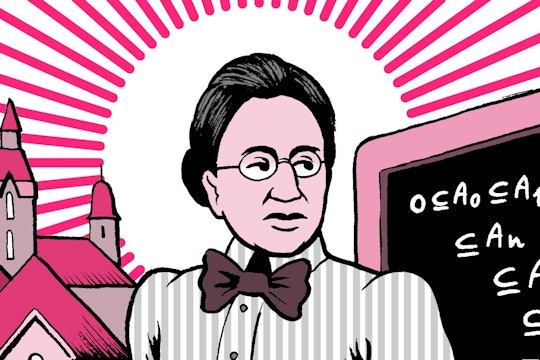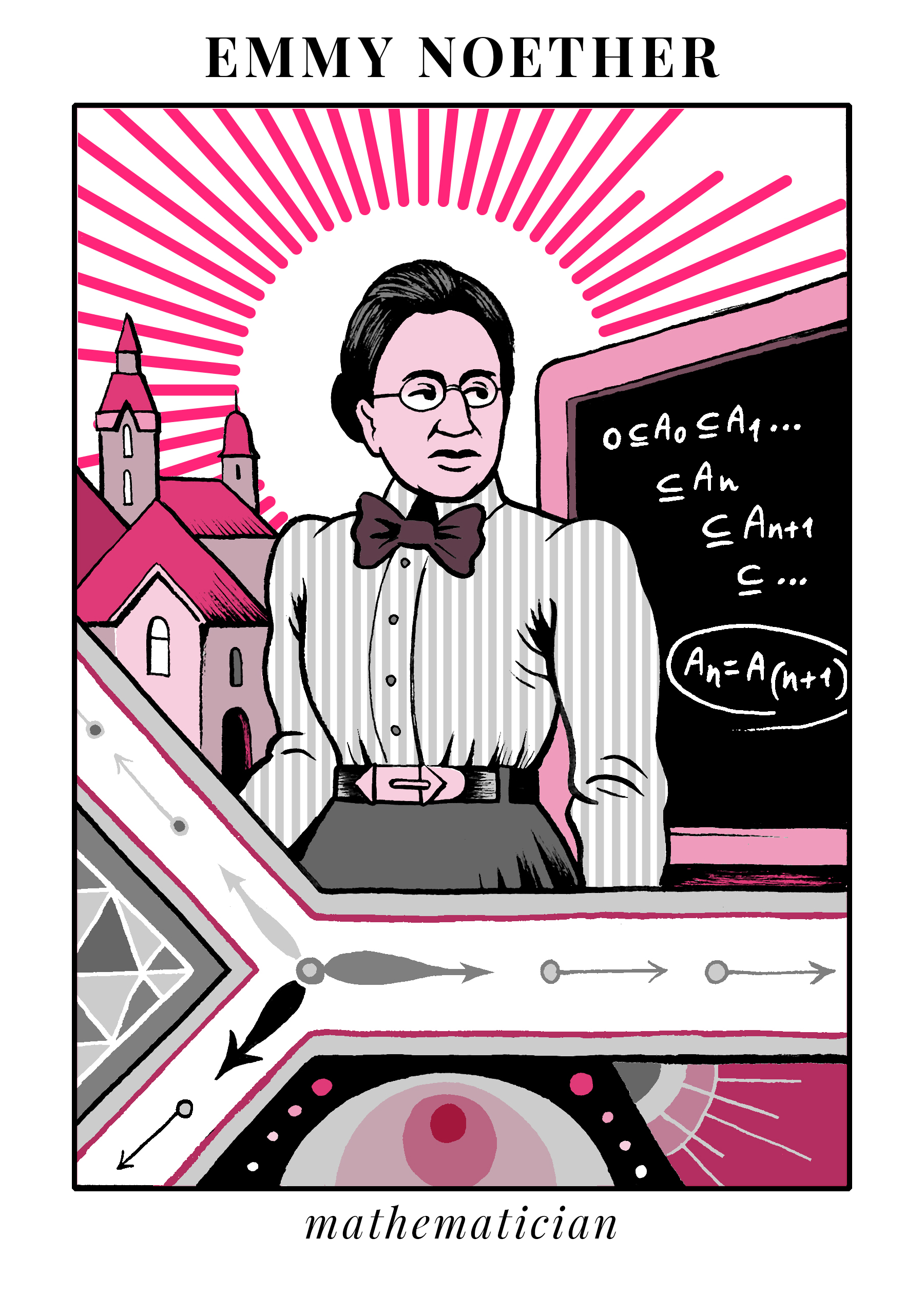
Matteo Farinella
Meet mathematician Emmy Noether, mother of the most beautiful theorem in the world
She worked out a kink in general relativity and kickstarted the field of abstract algebra
Brilliant, creative, and assertive, Emmy Noether helped to fine-tune the theory of general relativity and kick-started a new field of mathematics with her conceptual, abstract approach and "big picture" ideas.
Noether's revolutionary way of thinking changed our approach to mathematics and physics in the early 20th century, despite struggling throughout her life for the opportunities afforded to her male colleagues. She is perhaps the most important mathematician that you’ve never heard of.

Matteo Farinella
Emmy Noether was born in Erlangen, Germany in 1882 into an academically brilliant family. Her father Max was a successful mathematician, and two of her younger brothers eventually earned doctorates in chemistry and mathematics. As a child, Noether focused her studies on languages, music, and domestic duties – subjects deemed appropriate for women at the time. But after passing an examination in 1900 to teach French and English, she took the highly unusual action of studying mathematics at the University of Erlangen.
The university had only recently relaxed its ban on female students, but still only allowed women to audit classes, and only after being granted permission from their professors. In 1903, Noether passed the graduation exam at prep school in Nuremberg to earn her bachelor’s in mathematics. After a brief stint as a graduate student at the University of Göttingen, Noether returned to Erlangen and eventually earned her doctorate under the supervision of Paul Gordan, widely regarded as "the king of the invariant theory" of mathematics.
Prior to the end of the First World War, sexist university policies precluded female faculty members, and for many years Noether lectured at the University of Erlangen without a salary, sometimes substituting for her father, who taught in the mathematics department. At the same time, she published her early research on invariants, the concept that some features of mathematical objects remained constant even when that object is manipulated – a hexagon still has six sides even if we flip it upside down, for example. She also made her first steps into the field of abstract algebra, and soon caught the attention of famous mathematicians David Hilbert and Felix Klein.
In 1915, Hilbert, Klein, and the rest of the University of Göttingen’s mathematics department were enamored with Einstein’s radical new theory of general relativity. Hilbert and Klein hoped that Noether’s expertise in invariants would help them work out unresolved issues with the new theory, and invited her to apply for a faculty position. Despite her clear talent for mathematics, other faculty members refused to accept the prospect of a women colleague.
“I do not see that the sex of the candidate is an argument against her,” Hilbert implored university administrators, remarking that “we are a university, not a bathhouse.” Unable to turn the tide, Hilbert instead offered Noether an unofficial and nonsalaried position where she lectured under his name.
Now at the center of the mathematical world, Noether threw herself at the problem of general relativity, which suggested that energy was not conserved and thus violated physical laws. Noether quickly resolved this problem with her own theorem, which argued that since time and energy were linked, Einstein's proposed relationship between space and time was possible without ignoring physical laws when physicists considered a large enough space.
Noether’s second theorem forged a link between symmetries in nature and conservation of energy, momentum, and electric charge. Her conceptual way of thinking shifted the approach of mathematics from figures and formulas towards big ideas. Generations of physicists have relied on her theorem to understand everything from subatomic particles to black holes. A prolific and versatile mathematician, she continued to make important theoretical contributions to a broad swatch of mathematical and physical topics throughout her career.
As a teacher, Noether's lectures, delivered without formal lesson plans and at rapid speed, were difficult for many of her student to follow. Those able to catch onto her breathless style soon became infected with her enthusiasm. Her passionate and lively delivery often caused her hair to come loose, much to the horror of her more prim and proper students.
She was devoted to the development of her students. Noether frequently held lively dinner parties where they discussed their futures and mathematics, and hosted lectures at her home or at local coffee shops when the university was closed for holidays. Many of Noether’s students, including mathematicians Max Duering, Hans Fitting, and Grete Hermann, an early critic of quantum mechanics, went on to have successful careers of their own, benefiting from her early insistence that they come up with their own ideas and learn to teach themselves.
By 1932, Noether was a well-respected member of the European mathematics community. She was finally in a paying, academic position at the University of Erlangen and shared the prestigious Kermann–Teubner Memorial Award for contributions to mathematics. In November that same year, she delivered a well-received plenary address to the International Congress of Mathematicians in Zürich.
Within six months, Adolf Hitler’s administration dismissed Noether and many of her Jewish colleagues from their academic posts. As the Nazis consolidated power and the political climate in Germany decayed, Noether moved to Bryn Mawr College in Pennsylvania in late 1933, following the recommendation of Albert Einstein. Her short time in America is widely reported as pleasant and intellectually stimulating.
Noether died less than two years after moving to America as the result of surgical complications. Her colleagues and commentaries eulogized her as a creative mathematical genius that was undaunted by the challenges of her era.
